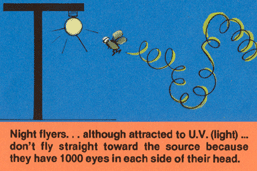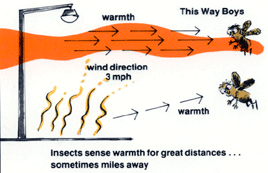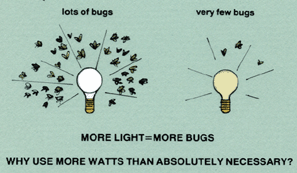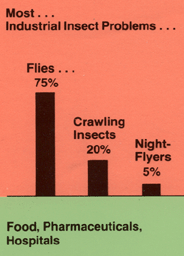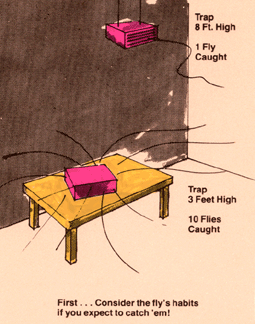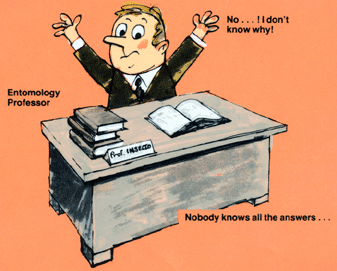|
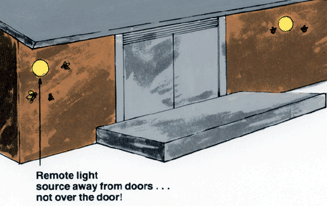
| Here is how some of this knowledge of lighting can be put to practical use. Outside light, for example, should be shielded so it can't be seen from above. Or, to be more precise, light should be directed toward the area to be illuminated. That's because nocturnal insects fly at high altitudes and would be pulled down if energy can be detected from above. Of course, lights should never be attached to buildings, but set apart from the building and directed toward it. |
|
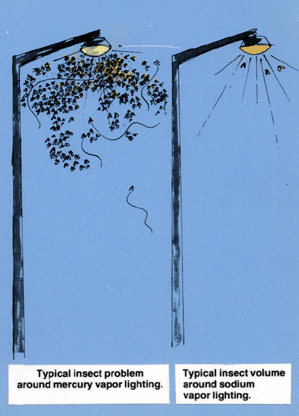
|
The reason is fairly obvious. With millions of insects swarming to reach the attached lights, thousands would settle and find their way inside through cracks and minute openings. Then
there's the matter of light intensity. Or, why use a 500 watt lamp when 30 to 50 watts will do the job? The lower the wattage, the lower the energy output and the less attraction of the insects. |
|
Often, if we've utilized high pressure sodium to light areas within 150 feet of a manufacturing plant, we install 400 to 1000 watt mercury vapor lamps on a 200 foot perimeter around the exterior boundary to serve as an interceptor line of defense. Insects (nocturnal) are then stopped at a safe distance from plant entry areas. |

|
| The locations of lights, the kinds of lights, light intensity, the behavior of insects toward light and light locations add up to a highly technical subject that goes much beyond the intent of this manual. A person who understands what is included here about lighting, and who can be assured of competent technical backup to deal with lighting, is sufficiently informed to design a lighting system that contributes greatly toward an insect-free environment.
|
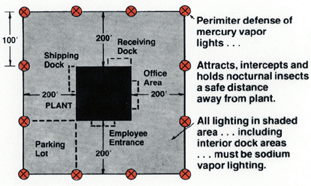
|
|
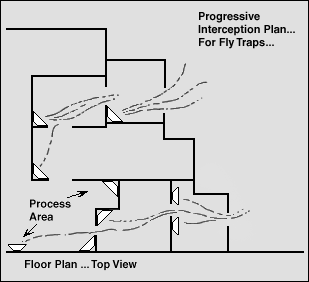
| Light Traps: To select insect light traps for proper application, two questions must be answered: what kind of insects are to be caught, and where will the traps be placed? The trap must be designed and strategically placed to accomplish the job assignment.
Observe the NIGHT FLYER, when it reaches a plant the tendency is to head for the ceiling: first, because that's where the lights are, and second, to reach warmer air near the ceiling. Consequently, large traps, placed eight feet or more from the floor (depending on the height of the building) are called for. |
|
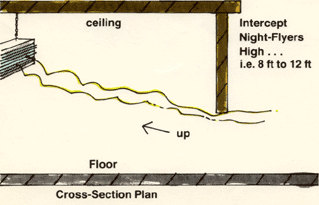
| Day flyers . . . present another problem. Primarily, when they enter a plant they're looking for that perfect temperature of 82.4 F, as well as for food, water and playmates. Traps to catch day flyers are mounted less than five feet from the floor. In fact, an ideal installation is in a corner, no more than eight inches from the floor and extending to a maximum height of 60 to 72 inches.
Here's how things work from the viewpoint of the fly. Outside, he's reasonably happy as long as temperature remains at 82.4°F. Under these pleasant conditions, the fly seldom has an interest in going inside the plant. But the temperature rarely remains at this ideal point. Even a slight variation will cause the fly to seek a more comfortable climate, and that usually means making a beeline for the nearest entrance to the plant.
|
|
Like Humans, he has an immediate problem adjusting to a sudden variation in light intensity. Usually, it takes him 20 or so seconds to get accustomed to the change. At that moment, just inside the plant door, the fly is most responsive to 40 to 80 watt ultraviolet source. All of this means that the best time to capture the fly is at the moment he enters the plant, and the best way to catch him is with an efficient ultraviolet trap, positioned 12 to 15 feet inside and facing the entrance. This is the moment the fly is least distracted by interior lights and is most responsive to the trap. In theory, 80% of the flies entering the plant should be caught, provided the traps are located correctly in relation to the entrance. Obviously, some will fly past and not be caught. But well-placed traps will catch a healthy majority. The ones lucky enough to get by the first line of traps, must be caught by other traps placed close to the floor and positioned strategically throughout the plant.
The fly is about 75% of the insect problem for most industrial plants. So getting to know him is essential for carrying out the task of designing insect control systems.
|
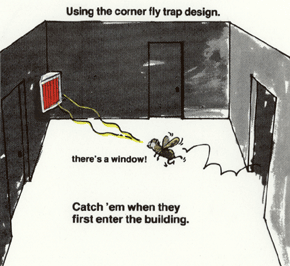
|
